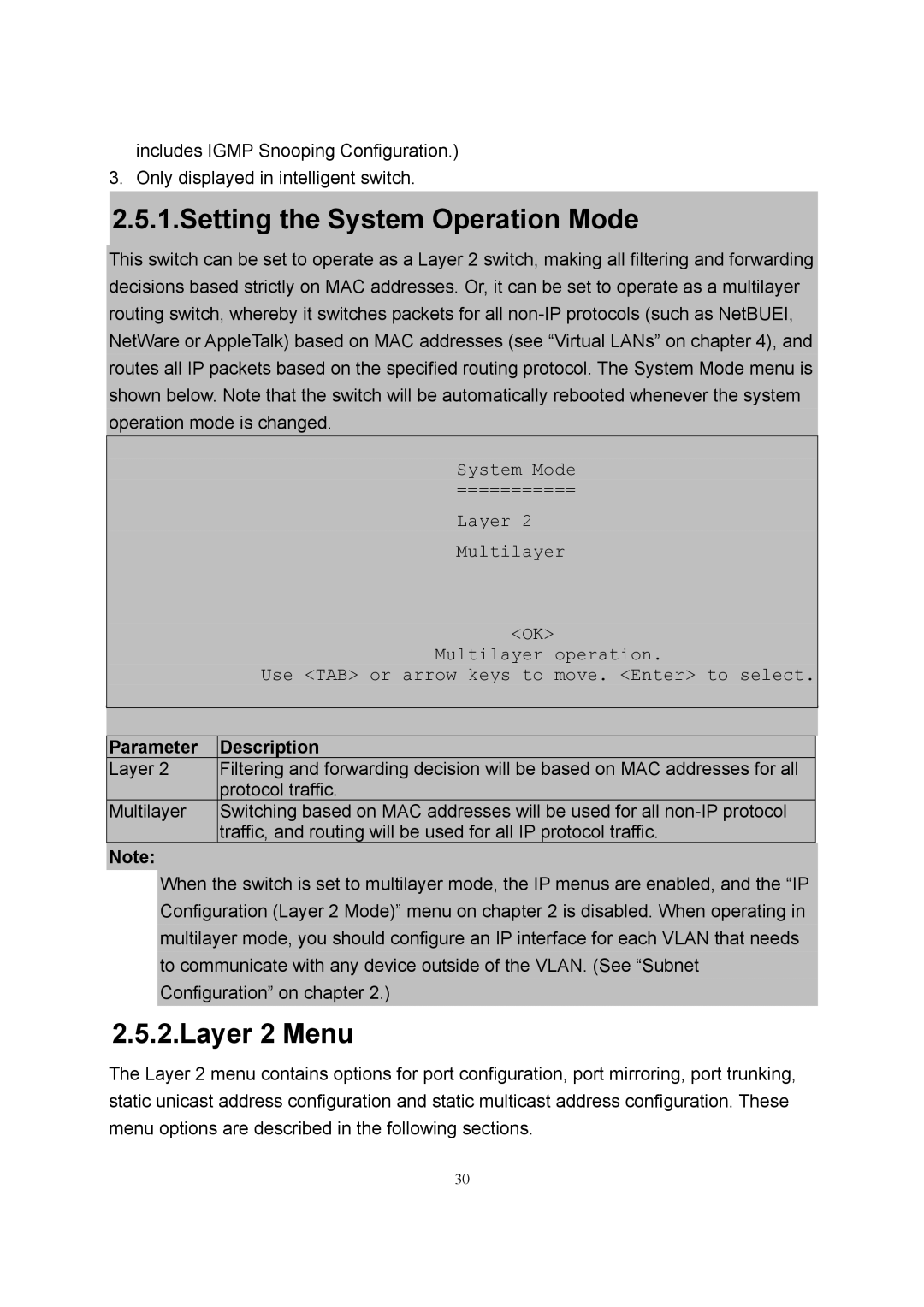
includes IGMP Snooping Configuration.)
3. Only displayed in intelligent switch.
2.5.1.Setting the System Operation Mode
This switch can be set to operate as a Layer 2 switch, making all filtering and forwarding decisions based strictly on MAC addresses. Or, it can be set to operate as a multilayer routing switch, whereby it switches packets for all
|
| System Mode |
|
|
|
| |
|
| =========== |
|
|
| Layer 2 |
|
|
| Multilayer |
|
|
| <OK> |
|
|
| Multilayer operation. |
|
|
| Use <TAB> or arrow keys to move. <Enter> to select. |
|
|
|
|
|
|
|
|
|
| Parameter | Description |
|
| Layer 2 | Filtering and forwarding decision will be based on MAC addresses for all |
|
|
| protocol traffic. |
|
| Multilayer | Switching based on MAC addresses will be used for all |
|
|
| traffic, and routing will be used for all IP protocol traffic. |
|
| Note: |
|
|
When the switch is set to multilayer mode, the IP menus are enabled, and the “IP Configuration (Layer 2 Mode)” menu on chapter 2 is disabled. When operating in multilayer mode, you should configure an IP interface for each VLAN that needs to communicate with any device outside of the VLAN. (See “Subnet Configuration” on chapter 2.)
2.5.2.Layer 2 Menu
The Layer 2 menu contains options for port configuration, port mirroring, port trunking, static unicast address configuration and static multicast address configuration. These menu options are described in the following sections.
30
